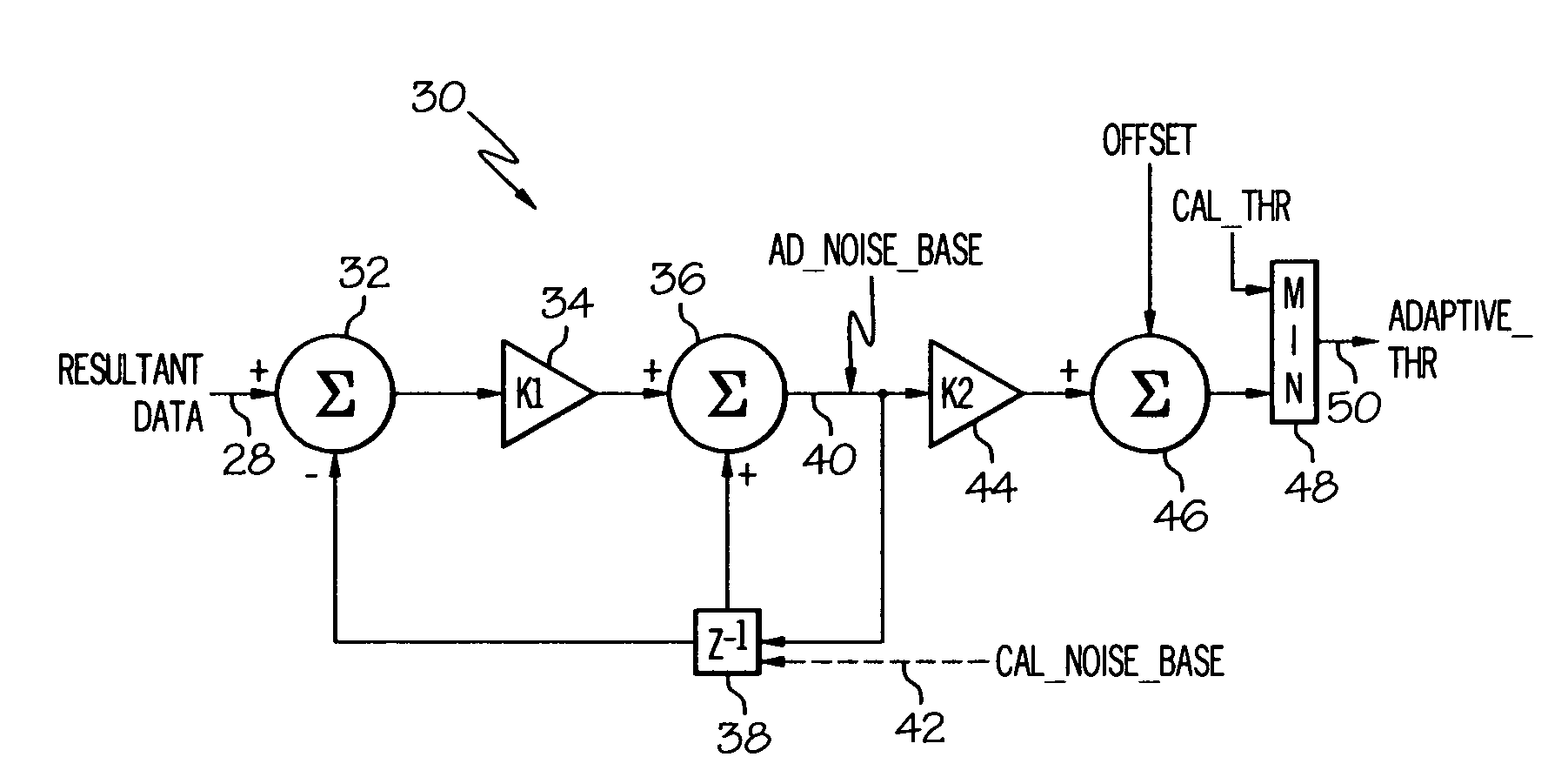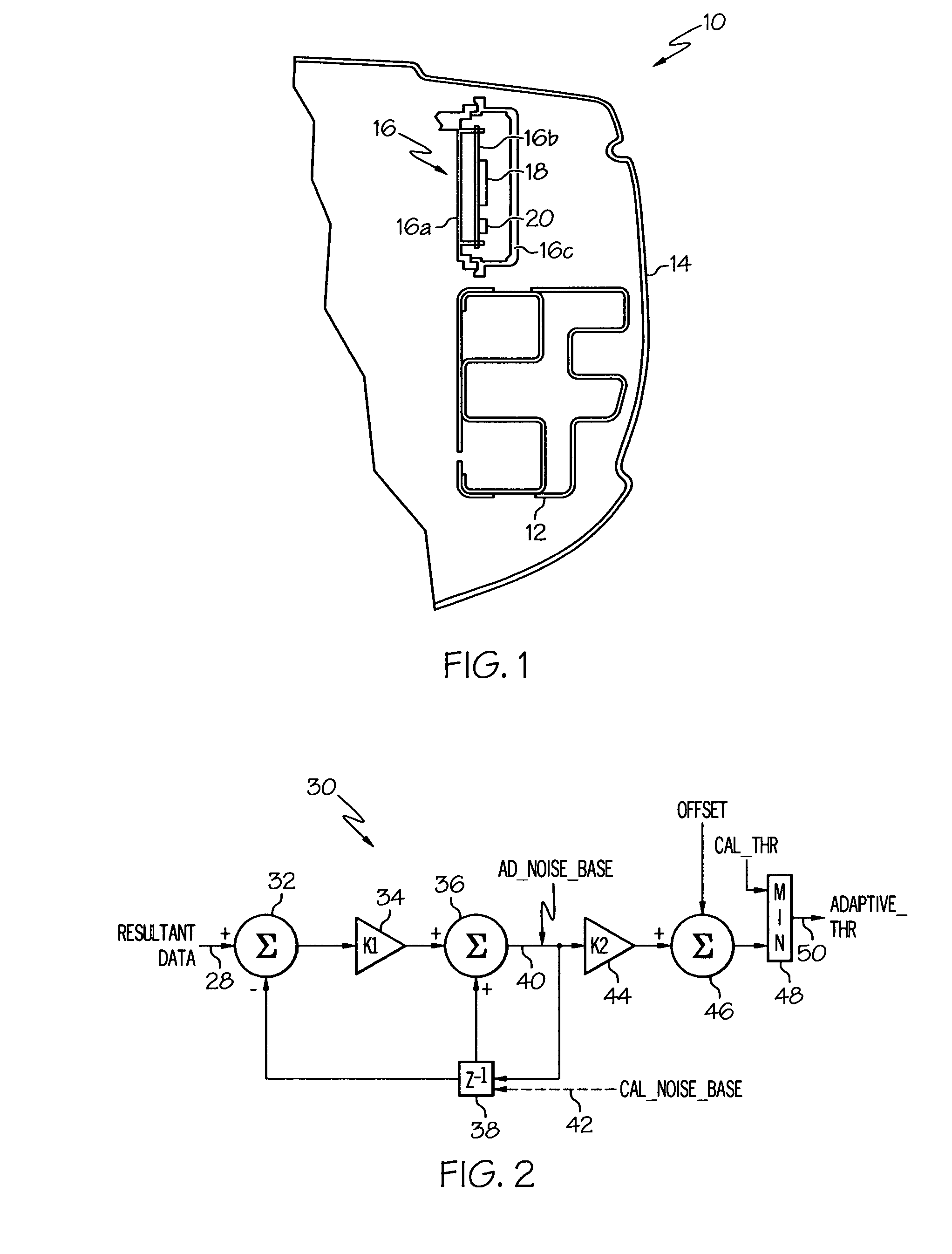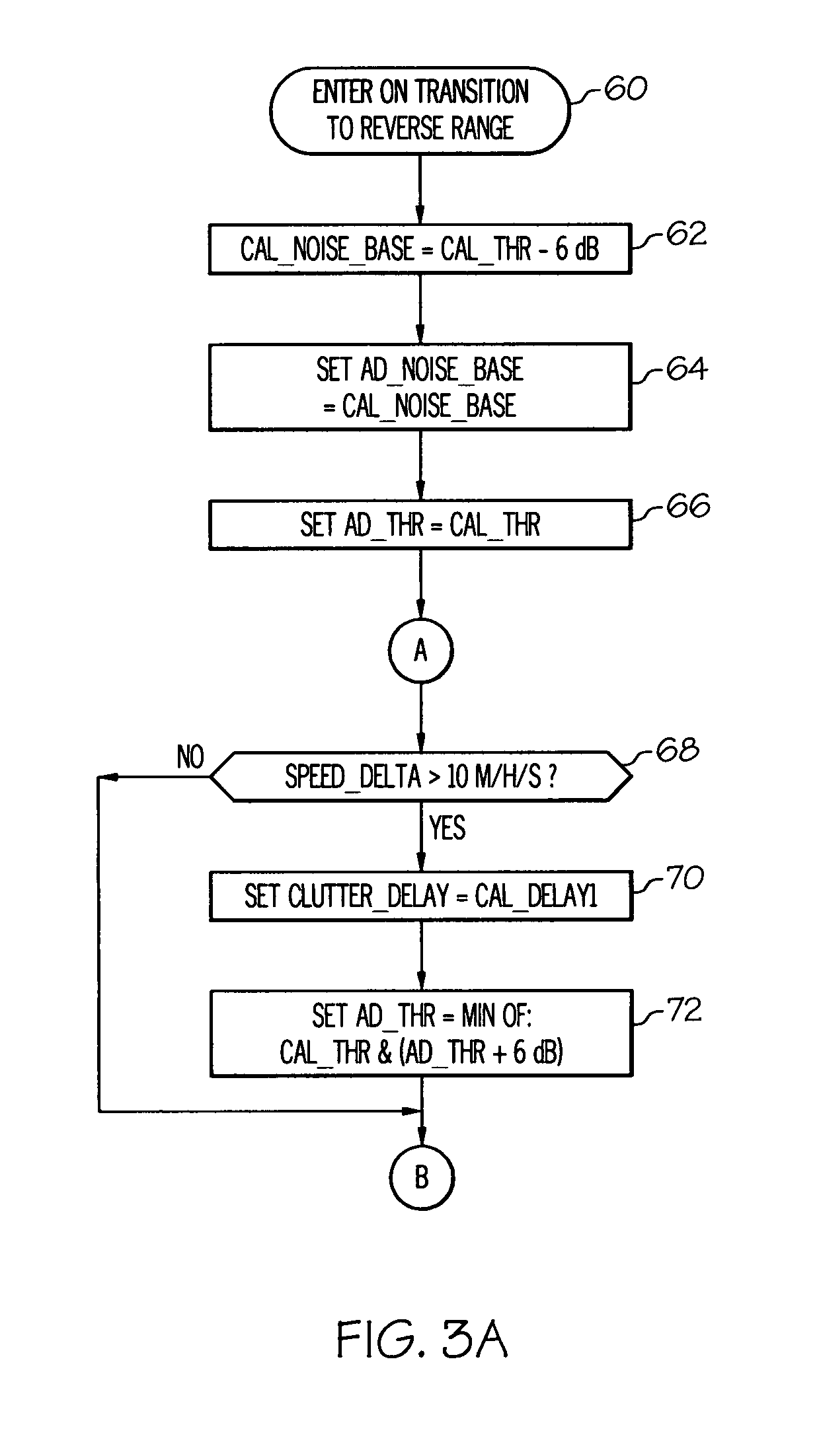Method of adaptively adjusting the target detection sensitivity of a motor vehicle radar
a technology of motor vehicles and target detection sensitivity, which is applied in the direction of reradiation, measurement devices, instruments, etc., can solve the problems of increasing the effective level of clutter or noise detected by the sensor, and unnecessarily limiting the target detection sensitivity of the system, so as to increase enhance the target detection sensitivity
- Summary
- Abstract
- Description
- Claims
- Application Information
AI Technical Summary
Benefits of technology
Problems solved by technology
Method used
Image
Examples
Embodiment Construction
[0007]Referring to the drawings, and particularly to FIG. 1, the reference numeral 10 generally designates a motor vehicle, including a bumper frame 12, a molded plastic bumper fascia 14, and a radar-based BUA module 16. In the illustrated embodiment, a housing 16a of BUA module 16 is fastened to a vehicle frame element (not shown) above bumper frame 12. The electronic components of BUA 16, including a radar sensor 18 and a microprocessor-based signal processor 20, are mounted on a circuit board 16b, and a radome 16c fastened to the housing 16a encloses and environmentally seals the circuit board 16b and the electronic components 18 and 20. In use, the radar sensor 18 illuminates a defined area in the rear travel path of vehicle 10, and quantifies the reflected signal by range bin to form resultant data for comparison with a target discrimination threshold. A target is detected when the resultant data exceeds the threshold, and the presence or absence of targets over a prescribed pe...
PUM
 Login to View More
Login to View More Abstract
Description
Claims
Application Information
 Login to View More
Login to View More - R&D
- Intellectual Property
- Life Sciences
- Materials
- Tech Scout
- Unparalleled Data Quality
- Higher Quality Content
- 60% Fewer Hallucinations
Browse by: Latest US Patents, China's latest patents, Technical Efficacy Thesaurus, Application Domain, Technology Topic, Popular Technical Reports.
© 2025 PatSnap. All rights reserved.Legal|Privacy policy|Modern Slavery Act Transparency Statement|Sitemap|About US| Contact US: help@patsnap.com



